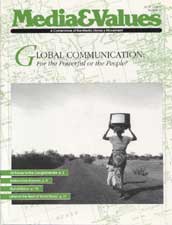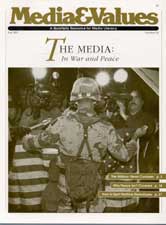Reading Room Search
Go here for complete Reading Room Article Index
Displaying 151 - 175 of 607How to Conduct a 'Close Analysis' of a Media 'Text'
A basic media literacy exercise. By Elizabeth Thoman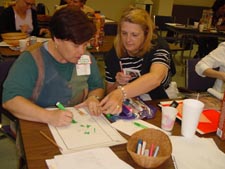
While getting "caught up" in a storytelling experience has been the essence of entertainment since our ancestors told tales around the fire, the relentless pace of entertainment media today requires that at least once in awhile, we should stop and look, really look, at how a media message is put together and the many interpretations that can derive from it. The method for this is called "close analysis." To learn to conduct this basic media literacy exercise, try it first yourself; then introduce it to a group or class using tips at the end of this article.
Any media message can be used for a... Read More

To be a functioning adult in a mediated society, one needs to be able to distinguish between different media forms and know how to ask basic questions about everything we watch, read or hear.
Although most adults learned through literature classes to distinguish a poem from an essay, it's amazing how many people do not understand the difference between a daily newspaper and a supermarket tabloid, what makes one website legitimate and another one a hoax, or how advertisers package products to entice us to buy.
Simple questions about the media can start even at the toddler stage, planting... Read More
Orthodoxy is the Enemy: Four Ways NOT to Teach Media Literacy
Plus One Great Way to Start! By Chris Worsnop
An orthodoxy is a strong point of view. It often starts from a philosophy or an ideology, and ends up as a way of seeing the entire world. Some orthodoxies come from religions, some from politics, others from charismatic individuals in all walks of life. People who hold to an orthodoxy are prone to extreme, dogmatic and inflexible thinking. There are orthodoxies in teaching, such as phonics-first and look-say approaches to beginning reading, and there are orthodoxies in media education that can lead the unwary media teacher into all kinds of swampy territory.
Orthodoxy #1: Media Education As... Read More

Psychologists, educators, and other researchers have studied how TV affects young children. Here are some of the main points they emphasize:
Young children watch more television than any other age group.
Between the ages of 2 and 3, most children develop a favorite television show and begin to acquire the habit of watching television. American children between the ages of 2 and 5 spend more time watching TV than any other age group! (Presumably, school and other activities cut down on viewing time for children in the 6 to 17-year-old category.) Among other things, heavy TV... Read More

Introduction
Three-year-old Hannah looks up from the television and announces that she wants to invite Cassie (the youngest dragon from Sesame Workshop's cartoon, Dragon Tales) to her upcoming birthday party. Her mother, a teacher recently trained in media literacy, tries out all her best strategies to convince Hannah that Cassie isn't real, but no matter what she does, Hannah doesn't seem to understand.
That's because the vast majority of media literacy materials and strategies have been designed for middle and high schoolers and, more infrequently, elementary level students. Rarely are... Read More
Any specialized form of discourse has its own unique language and media literacy is no exception. Even experienced media teachers are often bewildered by the seemingly interchangeable terminology used by writers and speakers in the field. Do note that many of these terms have much wider meanings than are suggested here. We are only attempting to define these terms as they related to the field of media literacy education.
Access: The ability of media consumers to produce their own texts and to have those texts acknowledged by the agenda setting media. Also, the ability of media consumers... Read More
With media messages more subtle and ubiquitous than ever before, simply turning off the TV set is no longer a solution. Instead a growing number of educators and activists say the answer is "Media literacy" -- teaching kids to recognize and understand thae images they see onscreen.
http://indyweek.com/durham/2002-08-14/cover.html
Media Literacy In Middle School
An Important Curriculum Component Sue Swaim, Executive Director, National Middle School Association The National Middle School Association (NMSA) has given considerable attention to media literacy as part of our continuing effort to provide timely and practical professional guidance to middle level educators and parents. We know that young adolescents interact with television, computers, radio, magazines, books, music, movies, and video games on a daily basis. According to a 1999 study by the Kaiser Family Foundation, the typical American child spends close to five-and-a-half hours a day consuming media outside of school. The time spent being a media consumer adds up to over 38 hours a week... Read More

In Great Transitions: Preparing Adolescents for a New Century, the 1996 concluding report of the Carnegie Council on Adolescent Development, the authors noted:
"At the threshold of the twenty-first century, media are an ever more pervasive presence in the lives of young adolescents. As heavy users of television, radio, film and computers, adolescents are aggressively targeted as a profitable consumer market by advertiisers. Their lives are saturated with entertainment and advertising, their capacity to make sense of messages from this array of powerful sources of influence is essential to... Read More
Collaborating for Success: Classroom teachers and video specialists
How video teachers and classroom teachers can work together to achieve powerful learning through student video production. By Donna Learmont Video production is a richly layered activity
that engages learning and skills on
many levels. It is a form of experiential
learning with attention-grabbing moments,
drama, and heightened emotions that create
the distinct memories that are essential for longlasting
learning. It's an inherently multidisciplinary
activity. Scripting and plot development involves
language-arts skills; lighting and white-balancing
cameras prior to shooting involves knowledge of
color temperature theory; credit sequences draw on
graphic-design skills; and sound editing requires
knowledge of music. In addition,... Read More
Making Media Skills
The critical connection betwen media production, media literacy and education. By Terry Payne Butler Summary: Three video-production teachers explain why the analytical and critical thinking skills of media literacy go hand in hand with student media production.
"Not only have we learned how to use the equipment, how to work together, and how to create something worthwhile for television, we've learned how to put it all together, too. We've learned how to watch television as well. We're paying more attention now to what we see. We know what to look for, because we have inside information. We're thinking more about what's on television, and making more intelligent decisions about what we want to spend our time watching. Most of all, after doing this kind of work ourselves, we have a lot more respect for what we view, and for the people who do it... Read More

The bottom line tells the story. While organizations such as Mothers Against Drunk Driving and Partnership for a Drug-Free America raise a few million to counter illegal drugs and alcohol abuse through public-service advertising, the alcohol and tobacco industries spend billions to reach potential consumers of their addictive products.
Direct advertising costs are paid for by consumers, but ultimately everyone pays for the long-term costs of substance-related illness, absenteeism and death.
True, our prevailing double standard does place illegal drugs (which cannot be advertised, of course)... Read More
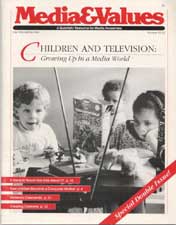
From Saturday morning cartoons to Nintendo, advertising and movies, parents worry about media's impact on their children. Are their fears justified? How much can parents and teachers influence children's media use? How did children become a consumer market? What should you know as a parent (or grandparent) about our exploding media environment? What practical and positive things can you do to make a difference?
"...examines issues of importance for parents, educators and everyone concerned about children today."
David Kleeman, American Children's Television Festival
"...a... Read More
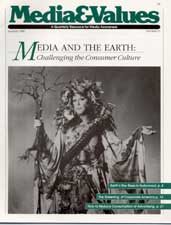
It takes more than recycling to care for the earth. More than a star-studded prime-time extravaganza. More than a multi-million dollar ad campaign financed by oil companies or fast-food chains.
As the world finally turns to restoring the planet, we must first restore our faith in the media that collect, interpret and disseminate the information we depend upon to make informed and wise decisions. This issue of Media&Values takes you inside the "greening of the media" to make the clear link between environmental values and the values of the media-driven consumer culture in which we all... Read More
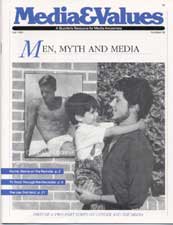
Imagine. You have a son. Or a grandson. He's growing up — fast— and becoming "a man." Who are his heroes? What is he striving for? And where did he learn it? This ground-breaking issue of Media&Values explores the meaning and image of masculinity on television, in the movies, in music and advertising. It examines the impact of male stereotypes on young people and raises questions about male dominance of new media technology — VCRs, computers and remote control devices.
Women in the media is a frequently discussed topic, but a look at male roles in the media is a unique contribution to... Read More

In a world where more than half of the population is female, women are still a media minority — not only on the screen but behind it as well. Yet from "Working Girl" to "Wonder Woman," the portrayal of women at the movies, on television and in the news continues to evolve.
This long-awaited issue of Media&Values features creators, critics and consumers exploring the contradictions and challenges facing women in a media world: sexism in advertising and MTV, the myth of female "techno-phobia," media portrayals as role models for young girls, the shocking absence of women in the news.... Read More
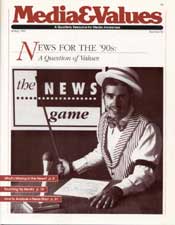
In the vital area of news, what is real is too often shaped by reporters and correspondents who are rarely allowed the luxury of depth. Or, more likely, by news executives who value ratings and sales more than the public trust.
Is the news business selling its soul for profits? How was the news transformed from what's important to what's entertaining? This special issue of Media&Values gives you a fresh perspective on how news is changing, what's missing in the news and how to spot bias and misinformation in news coverage, both print and electronic. Other articles examine the impact... Read More

Is there a bottom to the bottom line?
In recent years we have witnessed a mind-boggling scenario — phenomenal wealth juxtaposed against an exploding crisis of poverty, homelessness and global famine. The media has been in a unique position to capture this dichotomy; indeed the industry has been a participant as conglomerates and moguls scramble for a bigger piece of the lucrative communications pie.
What is the price we pay for our culture of capitalism? Can ethical values survive in a consumer economy? Where is investigative journalism on economics issues?
Media&Values tackles these... Read More

Children respond well to events such as Earth Day. Youth group projects, school lessons and community activities combined with media programs to forge a cause around which children could rally. But what can children do now that the celebration is over? How can they intro-duce continuing changes into their lives? And what does all of this have to do with their interactions with the media?
In order for children to understand and act on causes like the environmental movement they need concrete ideas with which they can identify. Like adults, they need to become conscious of everyday activities... Read More
Tools for Teaching Media Literacy in Faith Settings
Process, not content, is the key to success By Kevin O'Brien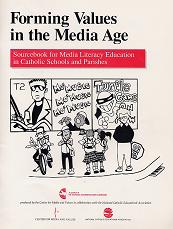
Media literacy education provides a perfect opportunity for leaders to teach as Jesus did. Teaching media literacy is a partnership, a journey of joint exploration by leader and participant, a co-learning. The model is not a hierarchical one where segments of information are expected to be memorized and regurgitated at the appropriate times. Rather, it is recognizing the "teachable moments" and capitalizing on participants' own knowledge and involvement in the media world that envelops them.
Indeed, even the youngest students will probably know more than an adult teacher about current movies... Read More
Christian Discernment in a Mass-Mediated Culture
Theological reflection on living the spiritual life in a global information and entertainment culture. By James McDonnell "With them indeed is fulfilled the prophecy of Isaiah which says: 'You shall indeed hear but never understand, and you shall indeed see but never perceive. For this people's heart has grown dull, and their ears are heavy of hearing, and their eyes they have closed, lest they should perceive with their eyes and hear with their ears, and understand with their heart, and turn to me to heal them.' But blessed are your eyes for they see, and your ears, for they hear." (Matthew 13: 14-16)
As Christians we are called to recognize and celebrate the presence and saving power of Christ and his Spirit... Read More


